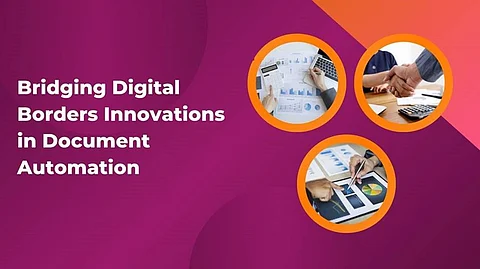

Innovative advancements in enterprise technology are reshaping the landscape of document automation. Venkatesh Nagubathula, a researcher with expertise in enterprise technology, explores the critical issue of interoperability in document automation within cloud environments. His insights highlight the challenges enterprises face and the innovative solutions shaping the future of digital workflows.
As organizations transition from legacy systems to cloud-based platforms, ensuring seamless document exchange remains a major challenge. Differences in data formats, incompatible APIs, security concerns, and outdated integration methods create bottlenecks that slow down automation initiatives. These obstacles impact implementation timelines and operational efficiency, making interoperability a crucial factor in successful digital transformation. Addressing these challenges requires a strategic combination of emerging technologies and standardized integration frameworks.
One of the most significant advancements in document automation is the integration of artificial intelligence. AI-driven document processing tools use optical character recognition (OCR) and natural language processing (NLP) to convert unstructured data into machine-readable formats. This reduces errors, increases processing speed, and ensures compatibility between different systems. Additionally, AI-driven systems can continuously learn and adapt to new document formats, further improving accuracy and efficiency over time. By leveraging AI, enterprises can streamline workflows and reduce manual intervention, leading to greater efficiency.
API fragmentation is a persistent issue, with different platforms using REST, SOAP, and GraphQL protocols. API gateways serve as a unified communication layer, translating data formats and managing authentication seamlessly. These gateways simplify integration, reduce technical debt, and enhance system security, making them a crucial component of modern document automation solutions. By enabling real-time data exchange, API gateways also improve operational agility and scalability across enterprise ecosystems.
Microservices architecture breaks down monolithic document management systems into smaller, modular services. This approach enhances scalability and reliability, allowing businesses to update individual components without disrupting entire workflows. Microservices also facilitate real-time data processing, reducing document exchange latency and improving overall system performance.
Document automation continues to be a major concern for most industries, especially those dealing with sensitive data. Each party keeps the same record with the use of blockchain technology - a single ledger-the verification of documents, its authenticity and unauthorized modification becomes impossible using smart contracts. It enhances automation via the invocation of activities that trigger to action under predefined conditions and minimizes manual oversight.
The dawn of low-code and no-code tools gave birth to democratizing document automation. These tools can be employed by users who are not technically skilled construct and change workflows on an intuitive interface to lessen dependency on IT personnel. Preassembled connectors implant document systems into existing enterprise systems to speed up deployability and reduce costs.
Complex workflows are involved to automate documents that are required to pass through different systems, from enterprise resource planning (ERP) tools to customer relationship management (CRM) tools. This makes the orchestration intelligent for speed and prevents data inconsistency. Workflows that automate processes across departments are quite attractive to organizations, especially those that provide easy real-time tracking, automated approvals, and seamless sharing with document management systems.
This is a grave concern for document automation because of the increasing number of data privacy regulations. Compliance is one of the stringent requirements that enterprises have to meet within the frameworks of GDPR, HIPAA, or SOC2 in dealing with sensitive documents and how such documents are treated and stored. Recovery technologies such as encryption, multi-factor authentication, and access control are standards of compliance, which make sure that document workflows are compliant and at the same time, ensure the safety of information from the unauthorized access.
Looking ahead, enterprises will adopt AI-driven adaptive integration, where machine learning predicts and resolves interoperability issues in real time. Federated document processing will enable secure cross-organization data sharing without compromising privacy. Additionally, quantum-secure encryption techniques will safeguard document exchanges against emerging cybersecurity threats. The integration of robotic process automation (RPA) with document automation is another emerging trend, allowing repetitive tasks to be fully automated, further increasing operational efficiency and reducing human error.
Organizations that successfully implement document automation solutions experience tangible business benefits, including reduced processing times, lower operational costs, and improved decision-making capabilities. Enhanced data accuracy and streamlined workflows enable faster response times for customer service, better financial reporting, and greater agility in regulatory compliance. As document automation technology continues to evolve, businesses that invest in these innovations will gain a competitive edge in the digital economy.
In conclusion, Innovations in document automation are transforming enterprise operations, bridging the gap between legacy systems and modern cloud-based platforms. By adopting AI, blockchain, microservices, and low-code solutions, businesses can enhance interoperability, security, and efficiency. As highlighted by Venkatesh Nagubathula, the future of document automation lies in adaptive, intelligent, and secure integration frameworks that support seamless digital transformation.
